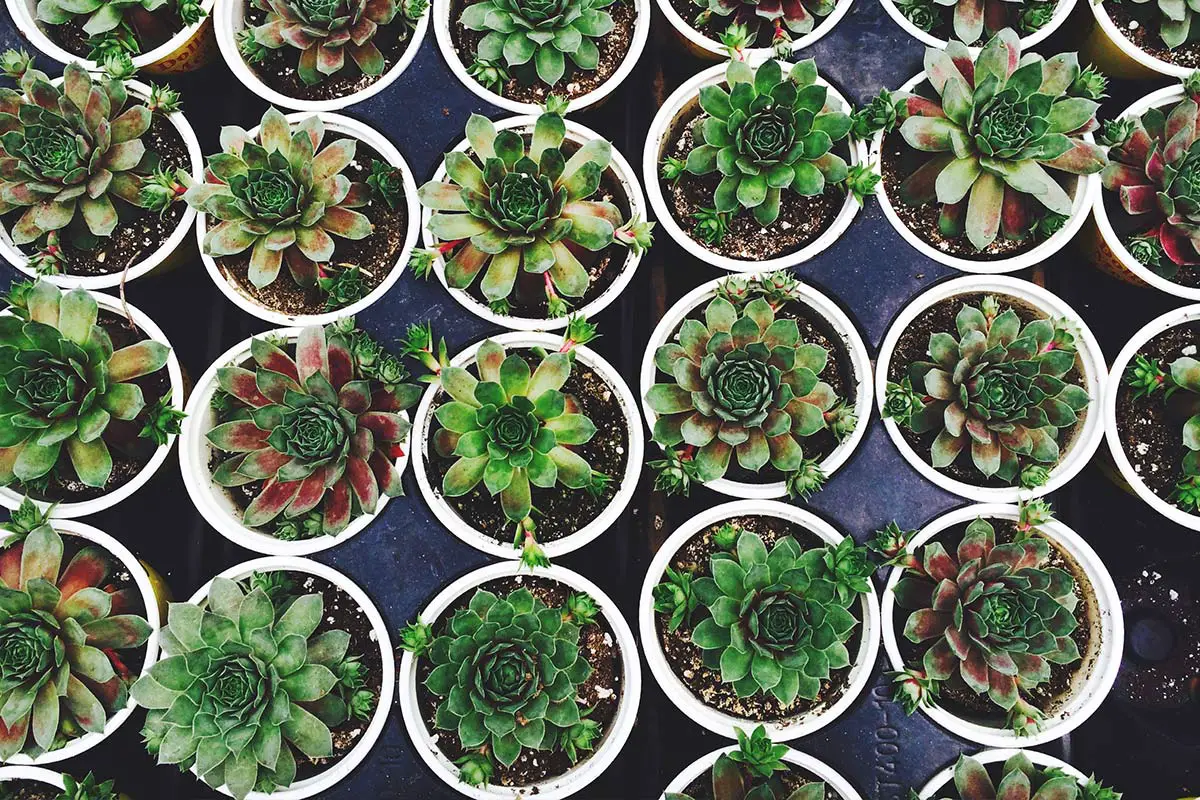Succulents are the perfect houseplant, whether you're a seasoned enthusiast or just starting your indoor garden journey. These resilient beauties, known for their thick, fleshy leaves that store water, are incredibly forgiving and bring a lush, modern aesthetic to any space.
While succulents are famous for their low-maintenance reputation, they do have specific needs. Getting the basics right—especially when growing them indoors—is the secret to moving from merely surviving to absolutely thriving. This comprehensive beginner's guide will walk you through everything you need to know.
Understanding Your Indoor Succulents
Before we dive into the care routine, it helps to understand what makes these plants unique. Their water-storing leaves are an adaptation to arid, desert-like climates. In an indoor setting, this means they are sensitive to two main issues: overwatering and insufficient light.
- What Defines a Succulent? A succulent is any plant with thick, fleshy parts (leaves, stems, or roots) designed to retain moisture. This includes popular types like Echeveria, Haworthia, and, yes, even cacti!
- Why Grow Them? Their low maintenance makes them ideal for busy people. They offer fantastic aesthetic appeal as striking decor pieces, and many varieties are incredibly easy to propagate, allowing you to quickly expand your collection.
Three Popular Indoor Varieties to Start With
| Variety | Defining Feature | Best for... |
| Echeveria | Rosette shape, often vibrant tips/edges. | Windowsills with bright, indirect light. |
| Crassula | Tree-like structure (e.g., Jade Plant). | Adding structure and height to a collection. |
| Aloe | Spiky, upright leaves with soothing gel inside. | An easily recognizable and useful plant. |
The Four Pillars of Indoor Succulent Care

Successful indoor succulent care boils down to managing soil, light, water, and temperature. Master these, and your plants will flourish.
1. The Right Soil Mix: Drainage is Non-Negotiable
The single most important factor for succulent health is excellent drainage. Standard potting soil retains too much moisture, which inevitably leads to root rot.
The Ideal Succulent Soil Mix:
-
Use a pre-made Cactus or Succulent Mix, OR
-
Create your own by mixing 50% regular potting soil/loam with 50% inorganic material (coarse sand, perlite, or pumice).
Tip: Always plant your succulents in a container with a drainage hole. Terracotta pots are highly recommended as they wick away excess moisture through the unglazed clay.
2. Light Requirements: Bright and Consistent
Succulents need a lot of light to maintain their compact, colorful shape. Aim for about six hours of bright light per day.
-
Best Placement: A south-facing or west-facing window is usually ideal for maximum sun exposure.
-
Watch for Signs of Stress:
-
Not Enough Light: Plants become "leggy" or "stretched out" (a condition called etiolation) as they strain to find light.
-
Too Much Light (Rarely indoors): Leaves may develop brown or bleached scorch marks.
-
3. Watering Techniques: The "Soak and Dry" Method
Overwatering is the #1 killer of succulents. Forget the once-a-week schedule; your plant needs to be watered based on the soil's dryness, not the calendar.
-
The Method: Only water when the soil is completely dry, from top to bottom.
-
How to Check: Stick your finger 1-2 inches deep, or use a moisture meter.
-
How to Water: When it's dry, water thoroughly until it runs out of the drainage hole (Soak). Discard any standing water in the saucer.
-
Seasonal Adjustment: You'll water more frequently during the active growing seasons (spring/summer) and significantly less during dormancy (fall/winter).
4. Temperature and Environment
Succulents prefer average indoor temperatures, generally between 65–85°F (18–29°C) during the day.
-
Humidity: They thrive in low humidity. Ensure adequate ventilation if you keep them in a humid room like a bathroom.
-
Dormancy: Many succulents enter a dormant (resting) period in winter. During this time, dramatically reduce watering and stop fertilizing entirely.
Troubleshooting Common Succulent Issues
Early detection is key to a long, happy life for your plants.
| Problem | Symptom | Immediate Solution |
| Overwatering | Yellow, mushy, or translucent leaves; mushy stem; soil stays wet. | Stop watering immediately. Allow soil to dry out. If root rot is severe, repot into dry soil. |
| Underwatering | Shriveled, wrinkled, or dry leaves; soil is bone dry. | Give the plant a thorough soak using the "Soak and Dry" method. |
| Pests (Mealybugs/Aphids) | White, cottony residue (mealybugs) or sticky sap (honeydew). | Isolate the plant. Treat with a cotton swab dipped in rubbing alcohol, or spray with neem oil/insecticidal soap. |
| Fungal Infection | Moldy or odd growths, often due to poor air circulation. | Prune infected foliage with clean shears and ensure better air flow. |
Expanding Your Collection: Simple Propagation
Propagation is the rewarding process of creating new plants from an existing one. Spring and early summer are the best times to propagate, as the plants are in their active growth phase.
-
Leaf Cuttings: Gently twist a healthy leaf off the stem. Let it sit in the open air for 2-5 days until the wound callouses over (a hard, dry scab forms). Place the leaf on top of dry succulent soil. After a few weeks, tiny roots and a "baby" plant will emerge from the callous.
-
Offsets (Pups): Some varieties produce miniature versions ("pups") at the base of the mother plant. Gently separate the offset using a clean knife or your fingers. Allow the wound to callous, and then plant it in its own small pot.
Conclusion
Growing succulents indoors is a deeply satisfying experience that requires more attention to when you water than how often. By prioritizing proper drainage, giving them bright light, and using the simple "soak and dry" technique, you will set yourself up for success. Enjoy the process of learning your plant’s needs, and watch your collection flourish!
Frequently Asked Questions
How often should I water my succulents?
How often should I water my succulents Water once every 1-3 weeks, adjusting for the season. Don’t water again until the soil is completely dry. This is important for preventing root rot, and thus maintaining your plants’ health.
What type of soil is best for succulents?
Provide well-draining soil Choose a mix that’s well-draining, preferably one made for cacti and succulents. This prevents water from just sitting, which can cause root rot.
Do succulents need sunlight?
Do succulents need sunlight? Yes, succulents prefer lots of bright, indirect sunlight. To grow your succulents indoors, keep them as close to a south or west-facing window as possible.
Can I propagate succulents easily?
You sure can, easy peasy! With succulents, you have the option of propagating via leaf cuttings or offsets. Simply let the cuttings dry for a few days before sticking them into some dirt.
What pests are common in succulent gardening?
Keep an eye out for mealybugs and aphids as well. If you find them, use insecticidal soap or neem oil on your plants to control them safely and effectively.
How do I know if my succulent is overwatered?
Common signs that your succulent is overwatered are yellow leaves, mushy stems, and smelly soil. If you see any of these, cut back on watering right away.
Should I fertilize my succulents?
Though fertilization isn’t a requirement, it’s helpful. Fertilization during your succulent’s growing season can be extremely beneficial. If you want them to grow faster, use a diluted, balanced fertilizer once a month.
Image Source: Paid image from CANVA




